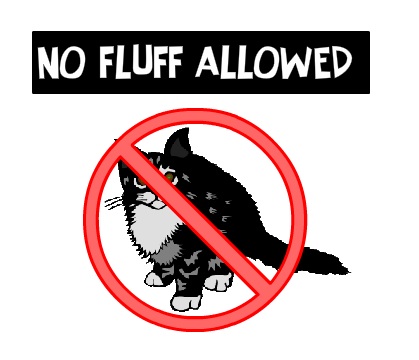The art of avoiding fluff and redundant content is one that first-time writers should learn, for them to move from being amateurs to professionals.
The Basics On Fluff And Redundancy
Many content writers experience moments of dismay when editors ruthlessly trim their words, but not many know the reason behind why this happens. This usually happens when writers fluff up their content with unnecessary lines that convey no meaning.
What Is Fluff?
Fluff is constituted by words or sentences that do not contribute any meaning to the core content.
To identify what’s fluff, let’s take a look at an example. Here are two excerpts of Book Descriptions.
These book descriptions help users of ecommerce websites learn more about a book before making a purchase decision. So the job of the writer is to describe a book and its author. Here, two different writers have tried to explain why an author has written her book.
Excerpt 1 (With Fluff): There were many incidents in her life that led to her writing this book. Her life has only been filled with tragedy and sadness, which led her to the pen and paper to let her feelings out. Her books have been receiving rave reviews and have become a bestseller.
Excerpt 2 (Without Fluff): Tragic incidents in her life made her pen down her feelings and write this bestselling book.
In the second excerpt, one sentence delivers the same meaning that three lines from the first excerpt do. Doesn’t it sound crisp and factual, when compared to the first?
Why Does Fluff Show Up In Writing?
Fluff can show up because of:
- Word Count: There is always a word count to meet when you write an article. When you find that the information you have is not enough, you might tend to fill up the article with extra words and sentences. This is the point when you start to add fluff to your work.
- Verbosity: Beware of falling prey to verbosity. Using complex and archaic words to rephrase something already mentioned will lead to fluff and grammatical errors.
Why Should Fluff Be Removed?
Online content is expected to be concise and fluff-free, as this increases the readability. You can read an entire article filled with fluff without really absorbing anything. Due to this, most companies prefer writers who develop content that is engaging and factual.
When writing contains fluff, grammatical errors are not far behind. Fluff entails the usage of the following:
- Complex and unnecessary words
- Convoluted sentences
Both factors naturally lead to grammar errors and slip-ups, bringing down the quality of the work.
What Is Redundancy?
Facts that are repeated more than once in an article count as redundant content.
This is a strict no-no too, because redundant facts deter readers from appreciating the overall article and drive them away from the page. Redundancy makes the information in your article look weak. Here’s an example:
Example: He sneaked past the office stealthily and furtively.
Here, stealthily and furtively share the same meaning, so both words need not be used.
Pointless modifiers can also contribute to redundant content.
Example 2: She is considered very beautiful. All who know her would describe her as being very lovely.
The above line about a beautiful woman is a striking example of how adverbs and adjectives can be thrown in to add to the word count, while conveying the same information in two different lines.
How To Avoid Fluff
Avoid fluff and redundancy by following these points:
- Keep The Word Count Realistic: Don’t fall prey to an impossible word count. Set a realistic target.
- Research More: Carry out extensive research and compile extensive data before writing.
- Keep The Lines Simple: Split complex sentences into simpler ones. Your work must be simple and easy to read.
- Avoid Complex Words: They don’t impress an online audience and bring down the readability.
- Avoid Meaningless Words: Words like ‘very’, ‘extremely’, and ‘things’ are unnecessary.
- Proofread For Redundant Facts: Read through your work to look for any instances of redundancy. Every line should stick to the core subject and no fact should be repeated twice.
Once you figure out how to identify and eliminate fluff, the quality of your content is sure to improve and the editors will suddenly seem much nicer.
Remember, concise content is the way to go!
Wordplay Content is a full-service content writing agency. Our business provides content writing services for a plethora of customers. Reach out if you want to hire us for your inbound marketing campaign!






3 Responses to How To Avoid Fluff And Redundancy